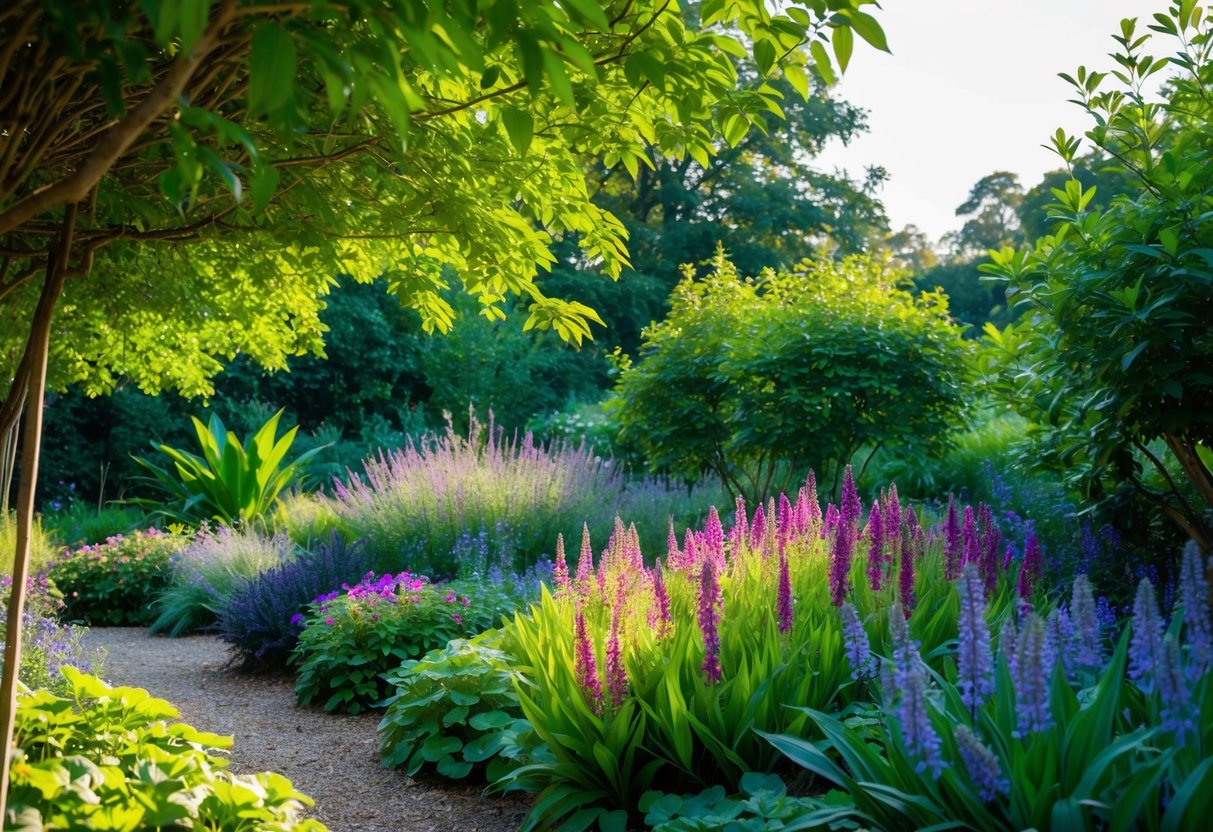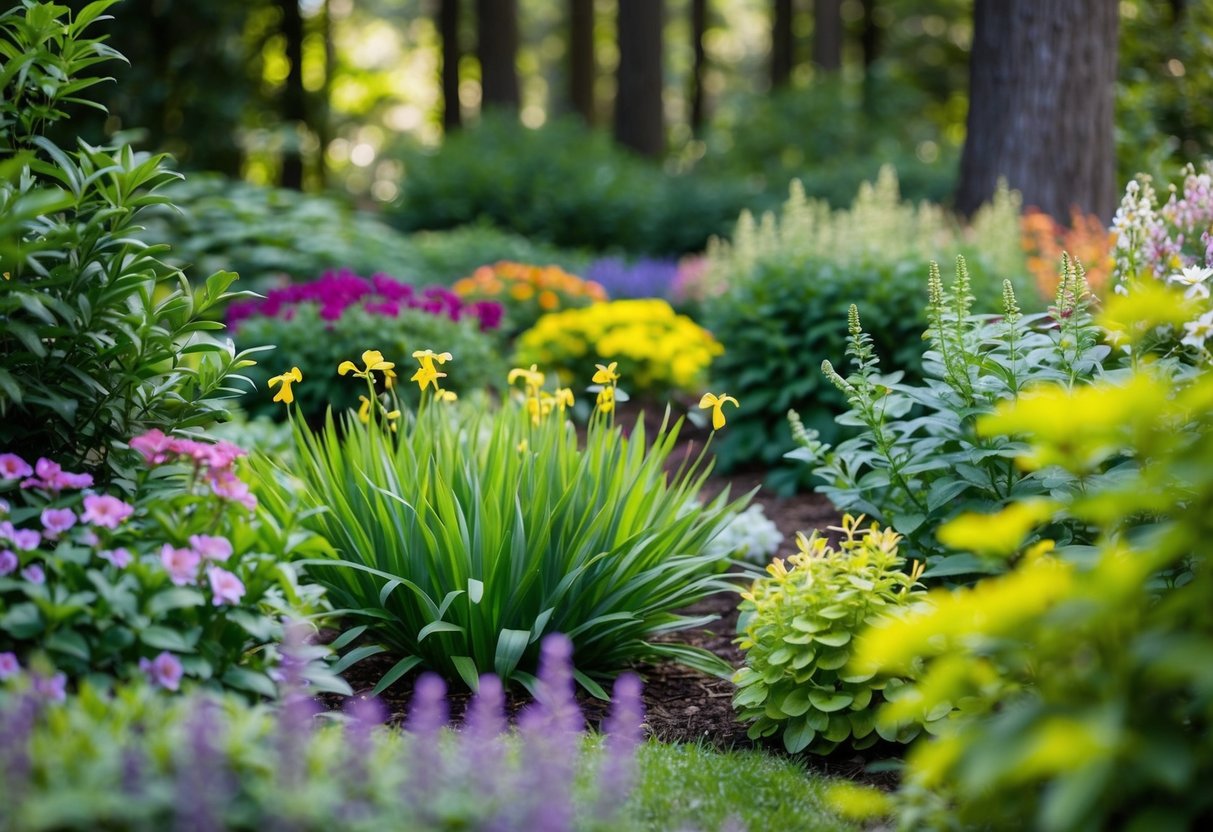What is the Longest Blooming Perennial for Shade? Discover Top Options
When planning your garden, you might wonder, “What is the longest blooming perennial for shade?” The toad lily offers stunning blooms from spring to fall, making it a fantastic choice for shaded areas. This unique flower is often compared to orchids due to its exotic appearance and comes in shades of purple or blue. Toad lilies thrive in partial to full shade, offering elegance and color that lasts for months.

Other great options include the foamflower and the garden phlox. Foamflowers are known for their delicate, wispy blooms and are hardy in USDA Zones 3 through 9. Garden phlox, on the other hand, provides vibrant flowers in light shade, adding a splash of color to your garden. Both options offer a long blooming period, keeping your garden lively all season.
These perennials adapt well to shady conditions, ensuring your garden remains filled with life and color throughout the summer. If you’re looking for shade-loving perennials that bloom all summer, these choices provide variety and charm. Enjoy the lush beauty of these plants without having to worry about too much sunlight, and bring your shaded garden to life with their vibrant blooms.
Understanding Shade and Its Impact on Plant Growth

When you’re planning a shade garden, knowing how light and soil affect plant growth is key. Different plants need specific light conditions and soil types to thrive, so it’s important to understand these factors to create a successful garden.
Defining Partial Shade and Full Shade
Shade in your garden can vary. Partial shade means the area receives about 3 to 6 hours of sunlight a day. This might be ideal for many plants that don’t thrive under the harsh midday sun. Full shade areas get less than 3 hours of direct sunlight each day. These spots are perfect for plants that prefer cooler, dimmer environments.
Understanding the amount of sunlight your garden receives will help you choose the right plants. For instance, Barrenwort, a shade perennial, thrives in partially shaded or full shade environments. By matching the right plants with their preferred light conditions, you’ll have a better chance of growing healthy, lush greenery.
The Importance of Well-Draining Soil
Soil drainage is an important aspect of any successful garden. Well-drained soil ensures that excess water doesn’t sit around the plant roots, which can cause root rot. To achieve this, consider using sandy or loamy soil, as they tend to drain well.
For instance, Coleus is a heat-tolerant plant that requires lightweight, well-drained soil for optimal growth. Adding organic matter to improve soil texture and drainage can also be beneficial. When you know your plants and their soil needs, you can help them grow healthier and stronger.
Choosing the Right Long-Blooming Perennials for Shade

Selecting the best long-blooming perennials for shaded areas can turn a dull corner of your garden into a vibrant display of color and texture. Consider plants like Astilbe, Bleeding Heart, Hellebore, and Lungwort, known for their lovely blooms and ability to thrive in low-light conditions.
Astilbe: A Shade-Loving Favorite
Astilbe is a standout choice for shaded gardens. This perennial features feathery plumes that bloom in shades of pink, purple, and white. It thrives in moist, well-drained soil and offers a striking contrast with its deep green foliage.
To keep Astilbe healthy, water it regularly and apply a layer of mulch to maintain soil moisture. Deadheading spent flowers can encourage more blooms. There are various types, such as ‘Fanal’ with red blooms or ‘Bridal Veil’, noted for its white flowers.
The Charming Bleeding Heart
The Bleeding Heart adds charm with its heart-shaped flowers hanging from arching stems. Available in colors like pink and white, these plants prefer cool, shaded spots. They prefer soil that is rich in organic matter.
Make sure to water deeply during dry spells. Since the foliage typically dies back after blooming, you might want to pair them with other plants to keep the area lively year-round. Varieties like Dicentra spectabilis are popular for their graceful blooms.
The Resilient Hellebore
Hellebores are known for their resilience and ability to bloom in late winter to early spring. These perennials boast nodding flowers in shades ranging from white to deep purple. They can handle a wide range of soil types, making them quite versatile.
For best results, plant them under trees where they can enjoy shade and protection from harsh weather. Some popular varieties include ‘Winter Jewels’ and ‘Lenten Rose’.
Colorful Lungwort Varieties
Lungwort is well-loved for its unique spotted foliage and bright flowers in pink, blue, and purple. It thrives in partial to full shade and prefers well-drained soil rich in organic material.
Focus on maintaining consistent soil moisture without waterlogging the roots. This hardy plant, such as the ‘Mrs. Moon’ variety, not only brightens up shaded areas but also attracts pollinators like bees with its vibrant flowers.
Caring for Shade Perennials Through the Seasons

Shade perennials need special care throughout the year. Focus on watering, feeding, mulching, and pest control to keep your garden vibrant. You should also aim to attract pollinators for healthier blooms.
Watering and Fertilization Needs
Shade perennials usually require less water than other plants. Monitor the soil moisture and water only when the top inch feels dry. Water deeply to encourage roots to grow deeper.
In terms of fertilization, choose a slow-release granular fertilizer to avoid overfeeding. Apply it in early spring for optimal growth. Use a balanced mix suited for your specific plants, knowing that different plants may have varying needs.
Tip: Ensure your soil is well-drained to avoid root rot. Perennials don’t like sitting in soggy soil.
Mulching and Winter Protection
Mulching helps regulate soil temperature and retain moisture. Spread organic mulch, like bark or leaves, around your plants but keep it away from the stems. This setup helps maintain a comfortable environment for your perennials.
When winter approaches, offer extra protection by adding a thicker layer of mulch. This shields the roots from harsh temperatures, especially in colder Hardiness Zones. Consider using a burlap wrap for more delicate plants.
Note: When spring arrives, reduce the mulch layer to allow the ground to warm up naturally.
Managing Pests and Attracting Pollinators
Keep pests at bay by regularly checking your perennials for signs of damage. Use natural deterrents like neem oil or insecticidal soap if you find common pests. Avoid chemical pesticides as they can harm beneficial creatures.
Attract pollinators to your shade garden by planting varieties like hydrangeas and hostas. These plants offer both nectar and shelter. To make your garden even more welcoming, provide shallow water sources and avoid pesticide overuse.
Important: Healthy pollinator populations support stronger plants and enhance blooming, making your garden a thriving ecosystem.
Showcasing Plant Diversity in a Shade Garden

Creating a diverse shade garden requires a blend of textures and colors, as well as strategic layering of plants. This approach can provide rich visual interest and extended blooming periods throughout the seasons.
Incorporating Different Textures and Colors
In a shade garden, you can create interest by mixing various textures and colors. Hostas are a great choice, offering wide, lush leaves. Pair them with Coral Bells, known for their small, colorful foliage. Add splashes of brightness with Fuchsia or Corydalis, which are shade-loving and provide vibrant flower hues.
Geraniums offer soft blooms, and Columbine features distinctive, nodding flowers that add elegance. By combining these plants, you create a dynamic palette of colors and textures that doesn’t rely solely on flowers for visual appeal.
Layering Plants for Extended Bloom Times
Layering is key for prolonging bloom times in your shade garden. Consider planting Daylilies in front of taller plants like Fuchsia. This arrangement ensures that as one plant fades, another begins to bloom. Coral Bells, with their compact size, fit well at the front, while Corydalis can fill in gaps with its delicate yellow blooms.
This strategy not only maximizes space but also allows each species to shine at different times. Columbine can be layered for a stunning effect, maintaining interest throughout the season. By carefully planning and placing your plants, your shade garden will offer a continuous display of beauty.
Additional Shade-Loving Perennials for Extended Blooms

When selecting perennials for shaded areas, you want those that offer a splash of color for the longest time. Several lesser-known varieties provide extended blooming periods, keeping your garden looking vibrant.
Discovering Lesser-Known Shade Beauties
Cranesbill, also known as hardy geranium, blooms in various colors and thrives in shaded gardens. Its blooms can last from early summer into fall.
Toad Lily has orchid-like flowers that appear in late summer and continue into fall. This plant offers beautiful purple or blue blooms that attract attention.
Bellflower produces bell-shaped flowers and can bloom from early summer to autumn. It grows best in partial shade and moist soil.
Consider adding these less common but beautiful options to create a long-lasting, colorful garden.







